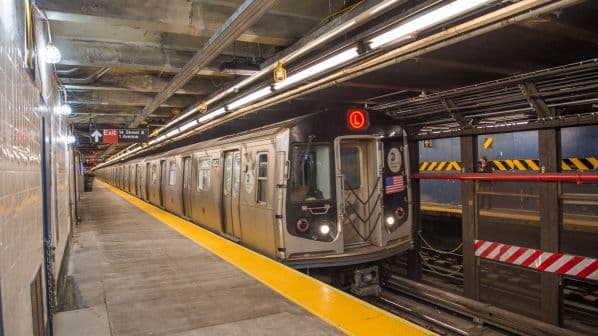RAIL safety technology is a family business for Australian father-daughter team, Mr Derel Wust and Mrs Joanne Wust. 4Tel was established by Derel in Newcastle, New South Wales, in 2000, with Joanne joining the company in 2015 with a background in marketing and public relations. She became acting CEO of the company in April 2018, taking over the reins from her father, and then permanent CEO in April 2019.
“Really important to our core story is that it’s a family-run business,” Joanne explains. “I think that’s really reflective of the systems that we build for the transport industry. We’re protecting people and assets in everything that we do.”
4Tel now provides modular solutions that can be integrated with existing systems, including Artificial Intelligence (AI), back-end management systems, passenger information displays, real-time tracking and worksite protection systems, and supplies systems for a variety of modes including rail, light rail, buses, ferries and ports.
4Tel began working on train positioning systems that do not rely on GPS or lineside signals in 2016. Derel approached the University of Newcastle with the idea of using cameras positioned on the front of a train to determine its location, which led to the development of a research partnership. The commercialisation of this research led to the creation of 4AIS in 2021, with Joanne as CEO and Derel as director.
“We started this because we’re in the train control business, and we needed to know where we were in multiple-track territory without infrastructure,” Derel says. “We didn’t start out to invest in AI, we had a specific problem in that we didn’t know where we were without using external systems. What we’ve learned is that AI is actually driven by position knowledge. When you know where you are, you can make lots of other decisions.”
“What we’ve actually come out with is not what we were expecting, but I think that’s why we decided to commercialise 4AI Systems, because we saw the benefits: the information that you can provide drivers to make them situationally aware and make more informed decisions,” Joanne says. “At the end of the day, if we can empower drivers to make better decisions in real time, then absolutely you’ve got to do that. And that’s where technology has a really good place in our future in the rail industry.”
The resulting Horus system uses an array of sensors mounted on the front of a train or locomotive, including multiple cameras, Lidar, radar, an Inertial Navigation System (INS) and GPS.
“We’re taking the data feed from each of those different sensors, and each of them have a specific purpose to create a visual representation of what’s in front of the train,” Joanne says.
Derel compares the elements of the system to the layers of an onion, with each giving a different view and range. “A selection of sensors gives us multiple expanding or contracting layers of information,” he says. “Cameras actually give us the long range at the moment and Lidar and radar the shorter range.”
The multiple layers of technology can also prevent false positives. For example, the cameras might detect a picture of a person on a billboard alongside the line as a hazard, while thermal imaging can be used to confirm the image is not a human.
“The thermal picture of a person comes back quite distinctive,” Derel says. “You can see the person there as a hot object, whereas a poster doesn’t have any thermal temperature. We reject a lot of false positives straight away through the fusion process.”
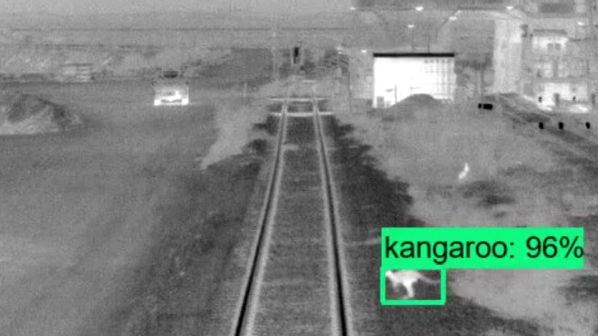
and animals on the track.
During the implementation of the system, the train operates up and down a line at various times of the day or night and in different weather conditions to gather a visual representation. This then creates a master data sequence that then provides a reference point that the system refers to during normal operation to determine the train’s location.
“Whenever the train travels over that track, if there’s anything different from the previous times, or the known safe states, then the system presents an alarm to the driver or shares that information with the control centre,” Joanne says.
The number of runs required depends on the quality of the data gathered during each run. While morning, evening or night running information can be gathered during a single day, other information such as how the line appears in different environmental conditions can require further runs.
The level of data gathered using the cameras and other sensors allows 4AIS to determine a train’s position to within 500mm at line speed, while the safety system is also able to detect signals and safety issues such as people, cars and animals on the track at a range of up to hundreds of metres or more depending on the camera quality and lenses being used.
The system is able to detect which track the train is on and any parallel lines, the way points are set and any signals alongside the line, and can also monitor the track condition as well. The computer is fed images at 25 to 50 frames per second or more depending on the cameras used, and in normal operation scans the parts of the image where items such as the track and signals are expected to be according to the master sequence data.
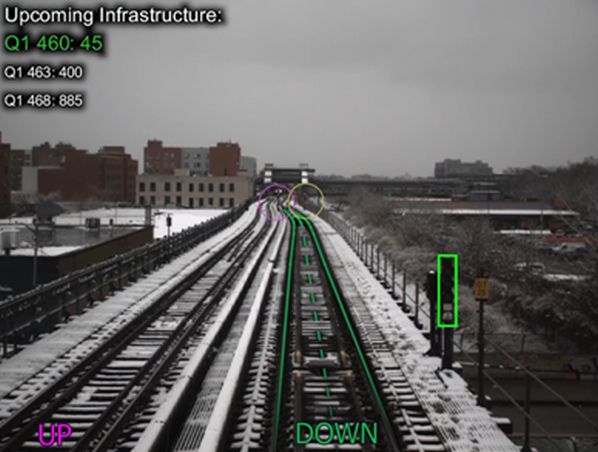
“We use that to our advantage to cue the computer. The computer knows what’s coming and starts looking for it,” Derel explains. “We don’t waste time looking for things that are not there, we only want to know what hazards are there. We could waste a lot of time looking for signals, for example, when we know there’s no signal there.”
“We’re giving them the data they need to drive safely, because people don’t deliberately go to work to have an accident.”
Derel Wust
As well as detecting hazards on the line, the system can alert drivers to their current speed and whether they have exceeded the speed limit, or whether they have come to the end of their track authority depending on the previous signal.
“We’re giving them the data they need to drive safely, because people don’t deliberately go to work to have an accident. What happens is they get distracted - something’s going on and they lose situational awareness,” Derel says. “Most people just need better data.”
How much of the information collected and processed by the system is presented to the driver depends on the operator’s preference. “We can put a lot of information in front of the driver, but you should never be distracting the driver as a primary concern, and so alarms and alerts are your best method,” Joanne says. “It’s customisable. What we’re focused on is the algorithms and making sure that the data collection and processing is correct. How you then display that is the less complex part of the problem.”
System trials
The system is still in the trial phase but has already been tested in a variety of settings, including on Rio Tinto’s automated heavy-haul freight railway in the Pilbara in Western Australia, where work has taken place with Hitachi.
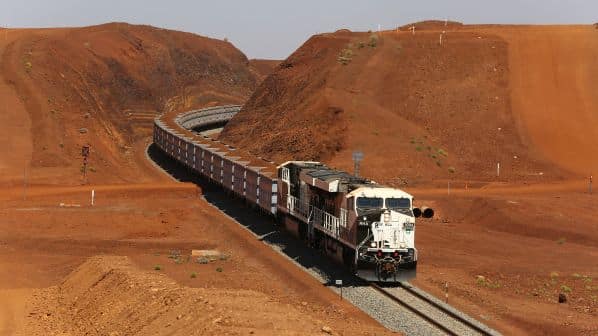
The second trial was with the New York Metropolitan Transportation Authority (MTA) through the Transit Tech Lab (TTL). Run by Transit Innovation Partnership, a public-private initiative launched in 2018 by MTA and the Partnership for New York City, TTL is a programme designed to provide a pathway for early and growth-stage companies to work with New York’s regional transport agencies including MTA, the Port Authority of New York and New Jersey (PANYNJ), NJ Transit, and the New York City Department of Transportation (NYCDOT) to solve public transport challenges.
TTL selects technologies through a six-step programme:
- Step 1: TTL announces challenges based on transit leadership goals
- Step 2: growth-stage companies apply online, providing evidence of product-market fit
- Step 3: experts from the transport and tech sectors review applications. Transit agencies select promising companies for accelerated proof of concept
- Step 4: proof of concept starts with companies and transit partners collaborating to implement and evaluate innovative technology
- Step 5: successful companies may be chosen to engage in a year-long pilot demonstrating technology at scale
- Step 6: selected companies may be eligible for commercial opportunities with transit agencies.
Since launching in 2019, TTL has run a number of challenges, focusing on topics including human capital, operational efficiency, Covid-19, pandemic recovery, sustainability, signalling and accessibility.
Prior to applying to the TTL programme, Derel and Joanne had travelled around the United States extensively due to Derel’s speaking commitments at various events, and eventually attracted the attention of the Transit Tech Lab.
“They were very excited about what we could do,” Joanne says. “I think being a fully onboard system as well is very attractive because of the downtime issues they have in the subway, as putting more infrastructure on the side of the track is really difficult to do while putting something on a train is a less disruptive process.”
4AIS was one of four companies selected from nearly 60 applicants to undertake a proof of concept in January 2022, which was completed in October 2022. Alstom, Ouster in partnership with Lux Modus, and Luminar in partnership with Seoul Robotics were also selected.
During the trial, five cameras and sensors were installed on a R143 metro car which captured 8000km of footage and 50 terabytes of data along the Canarsie Line. The system was able to detect people, objects, and signal aspects up to 490m away.
“Companies of this size don’t usually get to compete at this level. A lot of innovation comes from SMEs around the world.”
Joanne Wust
Both the configuration of the system and the software and technology used in New York and on the Pilbara heavy-haul railway were the same despite the major differences in operating environment between the two locations. In the Australian Outback, the system was tested in 50oC heat while also contending with dust storms, bush fires and kangaroos on the line, but in New York it was up against snow, freezing temperatures and rats.
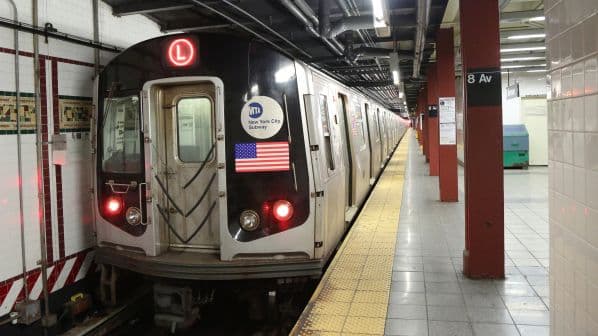
“The great thing was there were absolutely no changes to the baseline software, it was just applied in different scenarios,” Joanna says. “There are going to be different evolutions. So at the moment, because we’re doing an aftermarket installation, it’s going to be catered to the needs of the different vehicle and the environment in which it is operating. But, essentially, the design of the Horus sensor bar at the front of the train that’s linked to an internal computer stays the same.”
The implementation of the proof of concept was complicated by the Covid-19 pandemic. This forced 4AIS to come up with an innovative way to overcome this challenge.
During her travels around the US, Joanne met Mr Edward Russnow, president of MAC Products, a New Jersey company which designs and manufactures electro-mechanical products and equipment including electrification components such as catenary for MTA. MAC Products was also certified to work on MTA vehicles. Under the agreement, 4AIS and MAC Products created a subcontracting arrangement, with MAC Products taking delivery of 4AI’s equipment and installing it on the subway car, before relaying the information gathered back to 4AIS by means of online meetings and by phone.
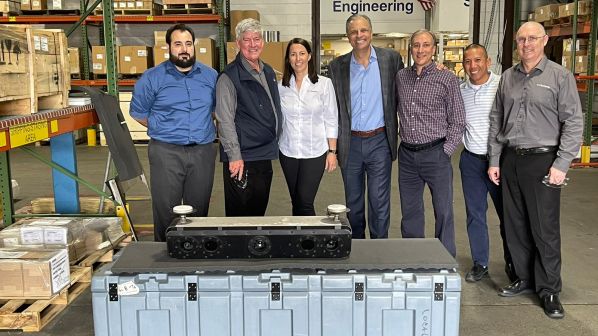
“We’ve got very complementary teams,” Joanne says. “We don’t cross over in our skill sets too much, but we can speak the same language. It took a lot of trust, but that went both ways.”
Rare in the rail sector, the TTL programme is also led by women: Ms Maria Gotsch, president and CEO of the Partnership Fund for New York City, the $US 180m investment arm of the Partnership for New York City, and Ms Stacey Matlen, Partnership for New York City vice-president of innovation. Other female staff are also heavily involved in the implementation of the TTL programme.
The objective of the TTL programme is to offer an arms-length body that is able to test and filter innovative technologies that may otherwise have been missed by railways and transport authorities focused on day-to-day operations. Derel and Joanne say this is important if innovations from other small and medium-sized enterprises (SMEs) are to be integrated into the railway system.
“Companies of this size don’t usually get to compete at this level,” Joanne says. “A lot of innovation comes from SMEs around the world. I think what they’ve done is a really good model that other metros and other rail entities in general could potentially adopt.”
Alongside her roles with 4Tel and 4AIS, Joanne is part of the Emerging Tech Group in Newcastle that supports and promotes collaboration between small innovative businesses.
“This is just Newcastle, you’ve got to imagine that around the world there’s all sorts of different companies doing these great innovative things,” Joanne says. “But how do you get them into the [rail] environments when big government organisations have restrictions on who they can actually work with based on their contract requirements?”
AI and automation usually conjure up images of driverless trains replacing those operated by a human. This may happen in the future, but for now Derel and Joanne say the system is designed to support rather than replace the driver.
The rail sector has always worked on the basis of smart track and dumb trains, with drivers responding to signals outside the cab. But 4AIS follows the trends of other modern signalling systems such as ETCS, which brings the information inside the cab, but also takes it a step further by removing the need for any signalling infrastructure outside the train such as balises.
As the train returns to the depot each evening, putting the technology onboard also improves security and allows software and hardware to be upgraded without the need for staff to work on track.
While it has the capacity to replace lineside signalling, the question of whether or not the system will do so anytime soon is up to each individual operator, Derel says.
“If you can determine your location with sufficient accuracy and make decisions affordably within the safety process, then the answer absolutely is yes,” he says. “In the fullness of time, you can see that the only infrastructure that would be essential would be the points. When it comes to power, signals, cabling, all that other infrastructure that’s in place, that will definitely be reduced.”
